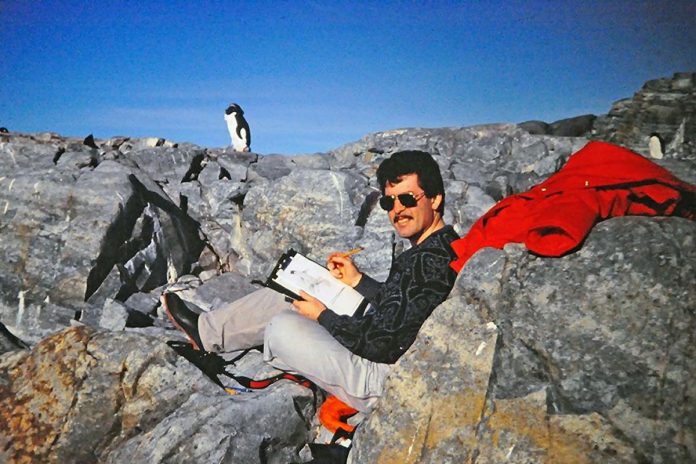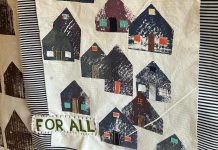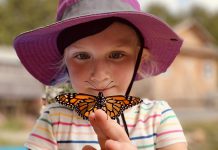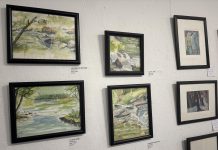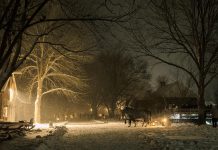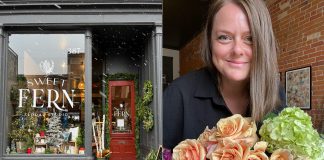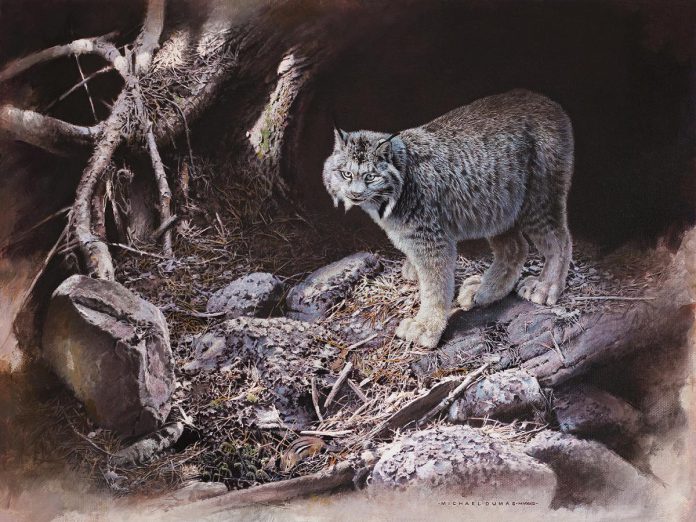
When an artist has had a five-decade career full of numerous awards, art shows around the world, and the kind of success that Michael Dumas has found, you might think he could create a new work in the blink of an eye — but that’s certainly not always the case.
At his upcoming exhibit at the Agnes Jamieson Gallery, located at the Minden Hills Cultural Centre in Minden, Dumas will be lifting the veil and offering a glimpse into the process of creating his distinctive works of art by displaying observational sketches and preliminary drawings.
On display from Thursday, July 17 to Saturday, September 13, “Of Light and Life” will feature work that spans his career offering several new pieces and styles that you might not anticipate from the acclaimed wildlife artist. An opening reception takes place on Saturday, July 19 from 1 to 3 p.m., where Dumas will also be launching his new book Algonquin Legacy.
“I hope people will be able to see more deeply into the art and realize how much thought and time that goes into it,” Dumas says. “They’re not just pictures — they’re statements of something that’s much deeper than that.”
The title of the exhibition combines two foundational and active ingredients of Dumas’ work that are exemplified across the more than 70 pieces in the exhibition.
Light, he explains, creates colour but also reveals form, which supports the foundation for everything he does with his “first love,” drawing.
“I am very caught up in different circumstances of light,” Dumas says. “It can be very dramatic light, it can be subtle, but light has an ever-changing effect on the way we look at the world. Because of that, I often return to the same subjects at some of the same places, because it will appear very different depending on the change of light.”
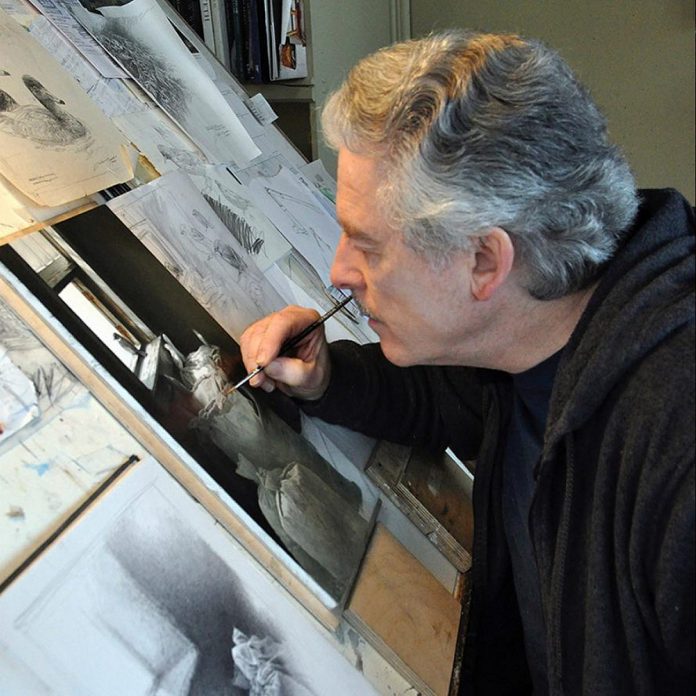
As for the component of “life,” he says there is a duality both in how he is depicting living things, while also offering insight into his own perception.
“My work is based on what I see and what I observe and what I experience and how it affects me, so a big part of that becomes my life I’m expressing through my paintings,” he says.
“There is a very strong emotional content. I will relate to things in my childhood, relate to different memories and other experiences, so by the time all of that filters through to the point where it’s so strong that I begin to paint, that’s the release.”
Unlike traditional retrospective exhibitions, “Of Light and Life,” will not be organized in chronological order, but rather will be spread across three separate areas.
The first is devoted to process and progress, featuring earlier work that shows Dumas’ evolution as an artist.
The oldest piece on display will be a wax crayon drawing from 1954-55 when Dumas was only four or five years old. There will also be preliminary sketch work that helps him get visuals of the wildlife he later turns into his award-winning realist paintings.
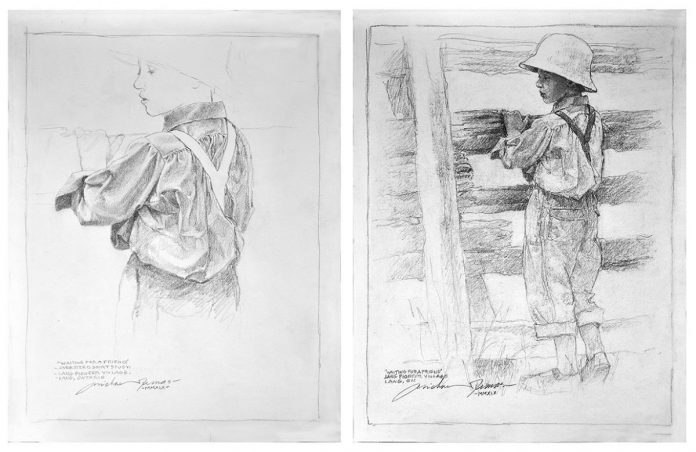
“It brings you in and you appreciate the work more, because you begin to realize that the art is not created just by someone sitting down and doing it all out in the head,” Dumas says.
“There’s a whole involvement with environment, with experience, and those things generate not just facts, but they generate emotions and impressions of things. And all of that dictates the direction of the painting. You get an idea or concept and it’s like a string, a thread you hold onto while you’re painting, and as long as you can hold on to that thread, it leads you in the right direction.”
“All the preparation and keeping hold of that emotional content of what inspired you in the first place is very important to me,” he adds.
Perhaps surprising to Dumas fans who are most familiar with his works depicting nature, the second section of the show will include portraits of people.
“That room is going to be dedicated to people, places, and things,” he says.
“A lot of that is going to be very much not just new paintings for people, but a new overall impression of what I do and have done my whole career.”
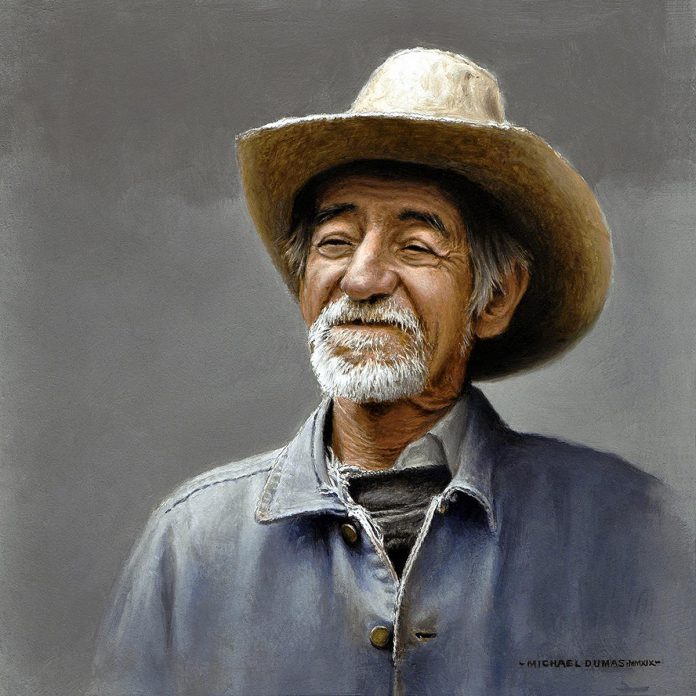
But, to no surprise, the largest room will be dedicated to the wildlife and nature-oriented subject matter for which Dumas has become well known not just locally, but around the world.
Throughout five decades, he has used his artwork to promote and raise funds for conservation initiatives and groups. In 2023, he was the recipient of the Simon Combes Conservation Award from Artists for Conservation.
“To me, it’s this privilege of seeing the secret lives of very evasive creatures you don’t get to see every day, and which can be a bit of a mystery,” Dumas says. “These are paintings of things that are happening in the world when nobody is around to see them. That’s how I look at the paintings: I try to be an invisible ghost observing these things but they’re really happening unbeknownst to the rest of the world.”
During the July 19th opening reception for “Of Light and Life,” Dumas will also be celebrating the launch of his new book Algonquin Legacy, which will document his appreciation for Algonquin Provincial Park.
Born and raised in the hamlet of Whitney, on the southeast border of the park, Dumas spent years working as a park ranger and has been involved in research projects — including getting to cuddle bear cubs to keep them warm.
Through stories, photographs, and, of course, many visuals, Algonquin Legacy will include some of these stories and show Dumas’ appreciation for a place that has played a “tremendous role” in his life. The latter quarter of the book will depict works where his life has taken him beyond the park.
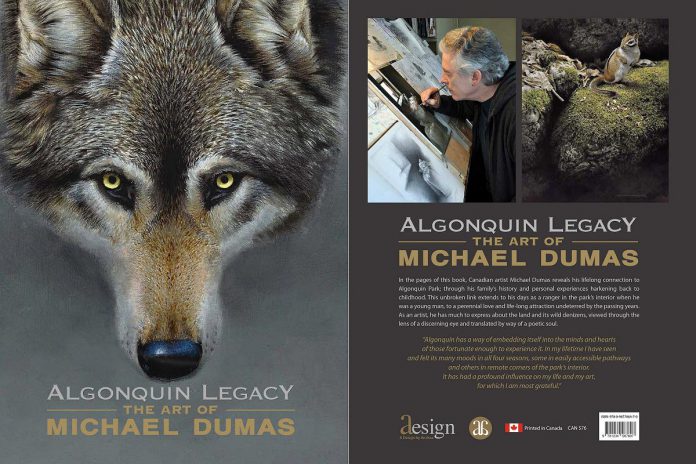
“I wanted to create a book envisioning the way I would want a book of an artist that I really liked,” he says. “I would want to see big images. I want to see how the artist has done things. I would want drawings to be there, and I want to see the relationship of things.”
Dumas encourages community members to join him at the opening reception, which will be full of bites, beverages, art, and lots of stories.
“I want to extend a really big invitation for people to come out and see it and not be shy in approaching me,” he says. “I love talking to people.”
The Agnes Jamieson Gallery is located at the Minden Hills Cultural Centre at 174-176 Bobcaygeon Road, a four-acre site in the village of Minden that also includes the Minden Hills Museum & Heritage Village, Nature’s Place, and the Minden Hills Branch of the Haliburton County Public Library.
